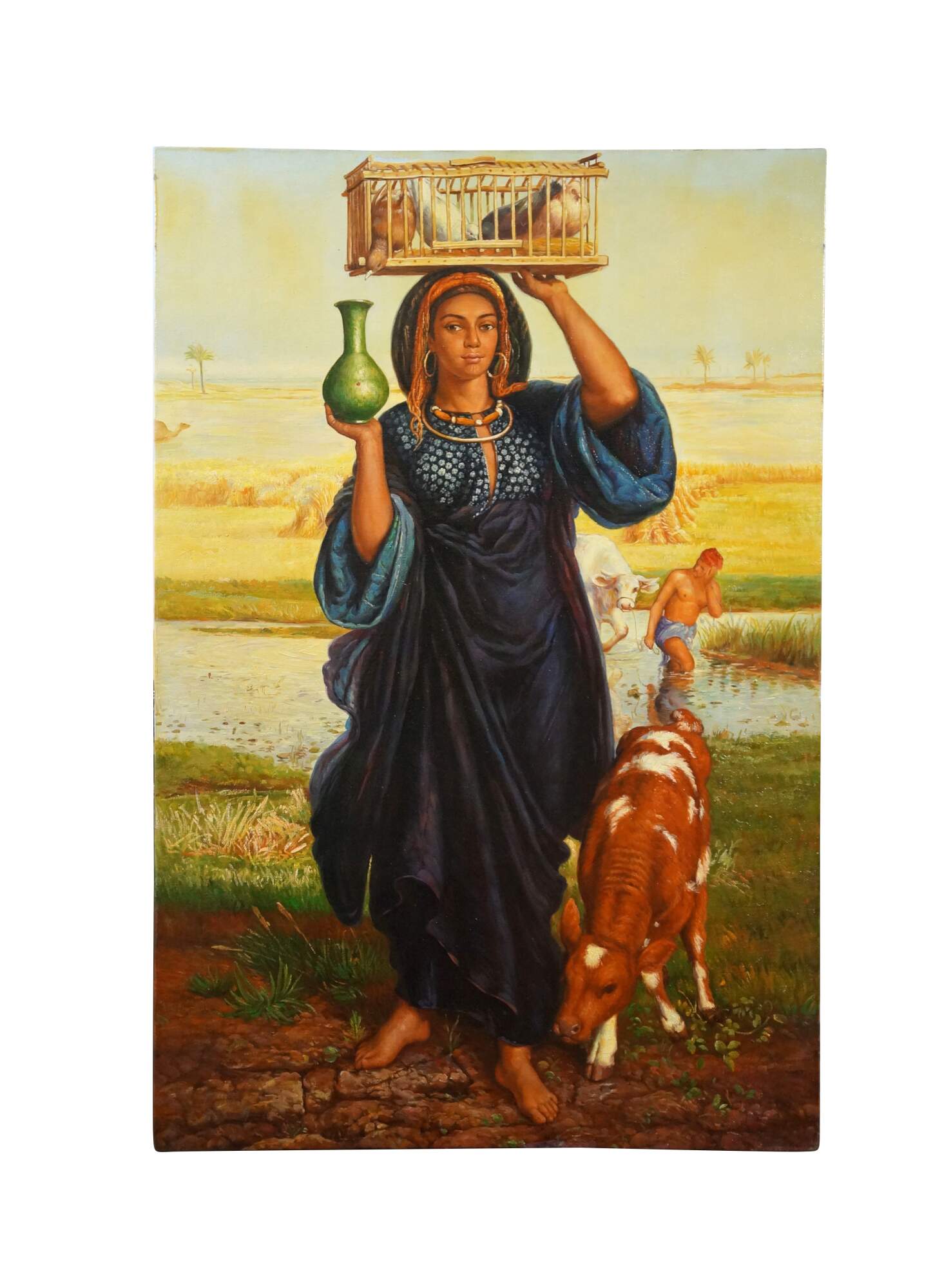
Shipping:
Free Shipping Included
Delivery:
Estimated 2-15 Business Days
Payments:
Credit Card, Check, Cash, PayPal, Apple Pay, Venmo
Returns:
30 Days 100% Money Back Guarantee, Buyer Pays Return Shipping
Description
Late 20th century oil on canvas painting after "The Afterglow in Egypt" by William Holman Hunt, originally painted circa 1861. "Hunt painted two verions of ‘The Afterglow in Egypt’. The first is a life-size painting of a woman carrying a sheaf of wheat on her head, which hangs in Southampton Art Gallery. The Ashmolean version is smaller and has always hung in Oxford, first in the Walton Street home of Thomas Combe, a great patron and collector of Pre-Raphaelite art. Combe died in 1873 and twenty years later, after the death of his wife, the painting came to the Ashmolean. In this painting an Egyptian woman dressed in beautiful clothes and jewellery carries a crate of pigeons on her head and a beautiful green vessel in her right hand. She gazes out at us and stands barefoot in a fertile landscape close to the water’s edge. The figure was read by Hunt’s contemporaries as a kind of Egyptian goddess of plenty. Hunt believed that agriculture was the only aspect of the once great civilization that had survived in Egypt. In the background we see the desert. A camel is about to enter the scene on the left side and the palm trees on the horizon stand against a pinky glow in the sky. The male figure, the cow and the calf only appear in the Ashmolean painting." (Ashmolean Museum) Unframed.
"William Holman Hunt OM (2 April 1827 – 7 September 1910) was an English painter and one of the founders of the Pre-Raphaelite Brotherhood. His paintings were notable for their great attention to detail, vivid colour, and elaborate symbolism. These features were influenced by the writings of John Ruskin and Thomas Carlyle, according to whom the world itself should be read as a system of visual signs. For Hunt it was the duty of the artist to reveal the correspondence between sign and fact. Of all the members of the Pre-Raphaelite Brotherhood, Hunt remained most true to their ideals throughout his career. He was always keen to maximise the popular appeal and public visibility of his works." (Wikipedia)
Condition
Good Overall - Some scuffs at edges
Dimensions
24" x 0.75" x 36" (Width x Depth x Height)
You May Also Like